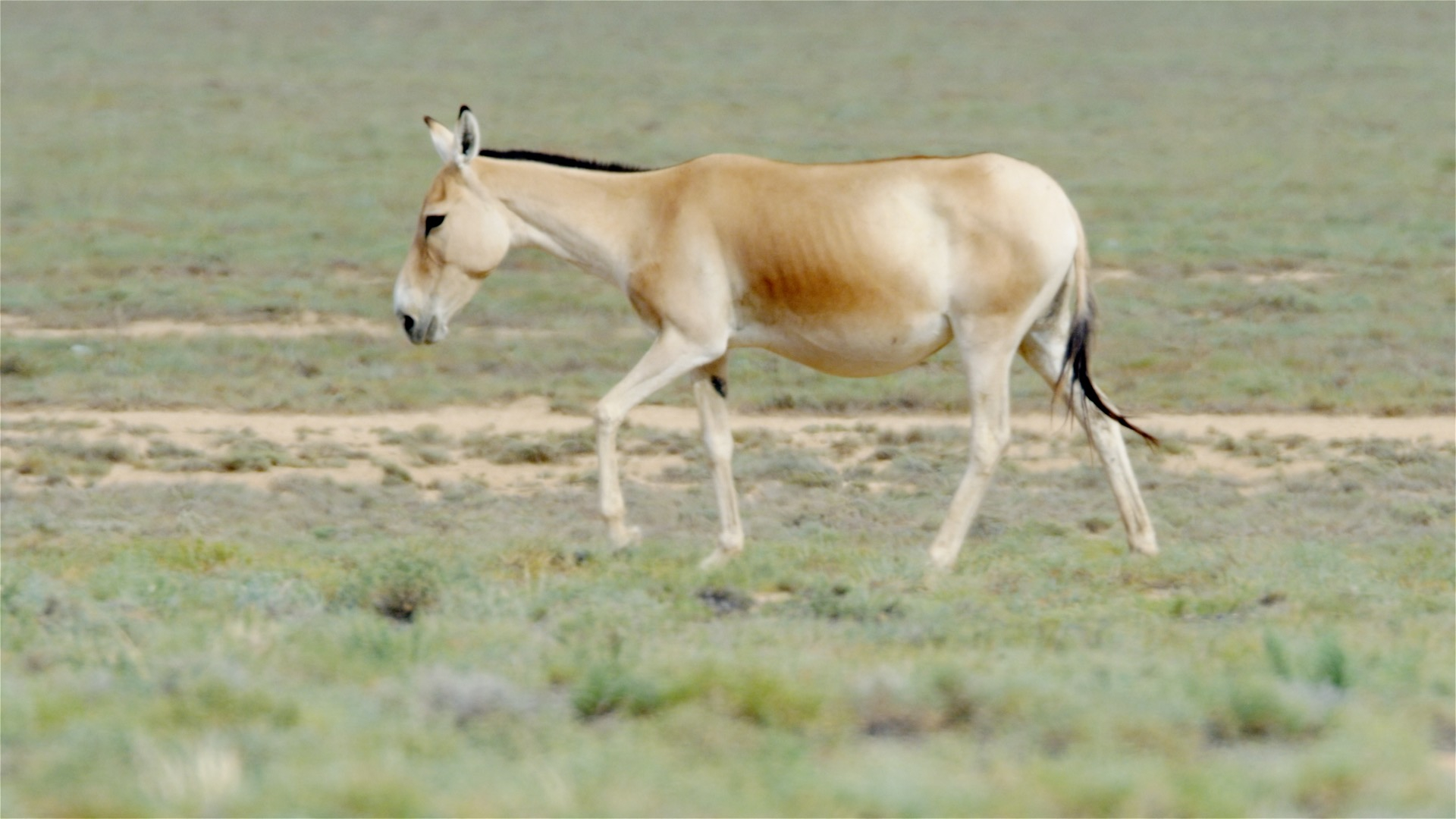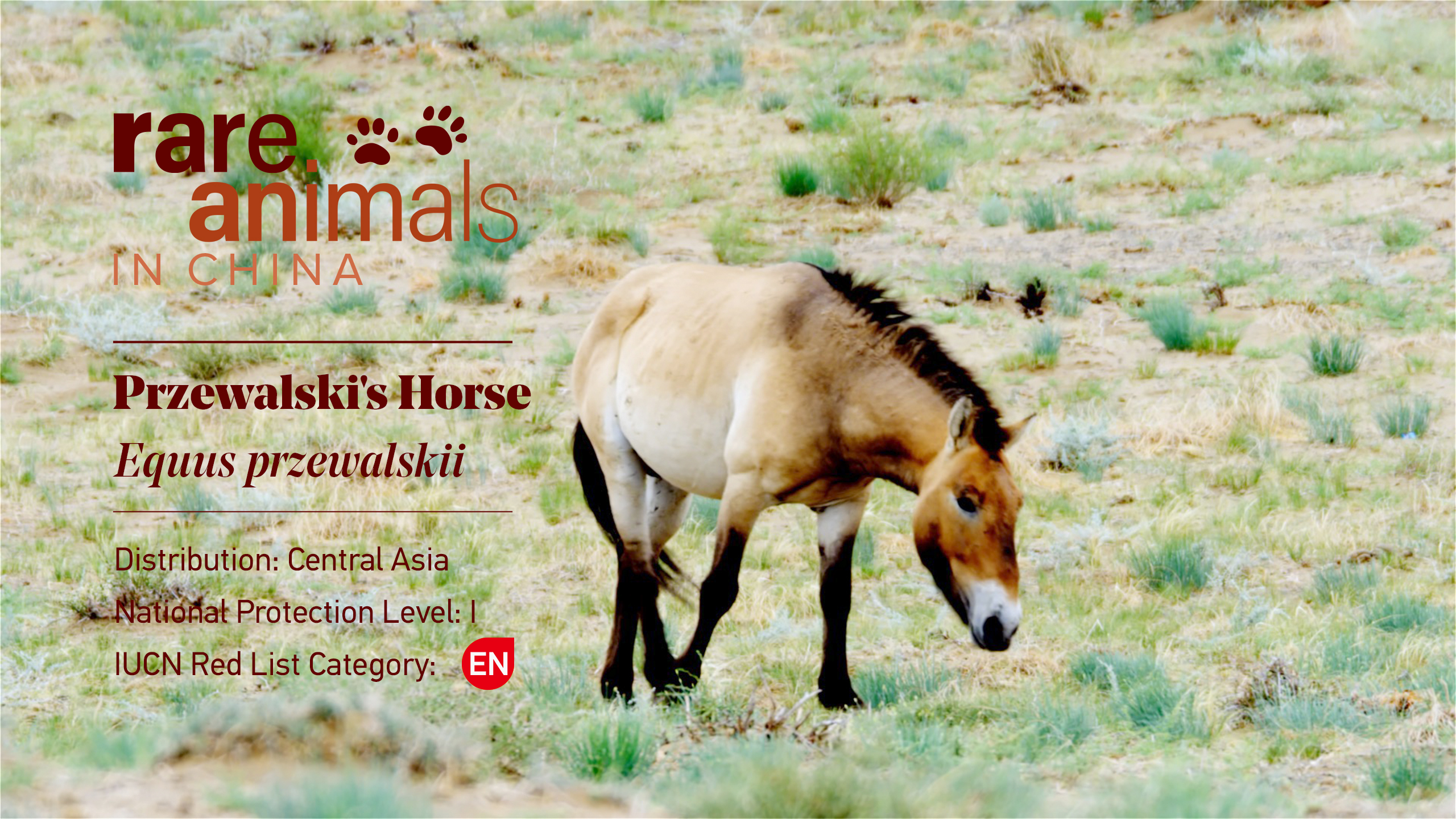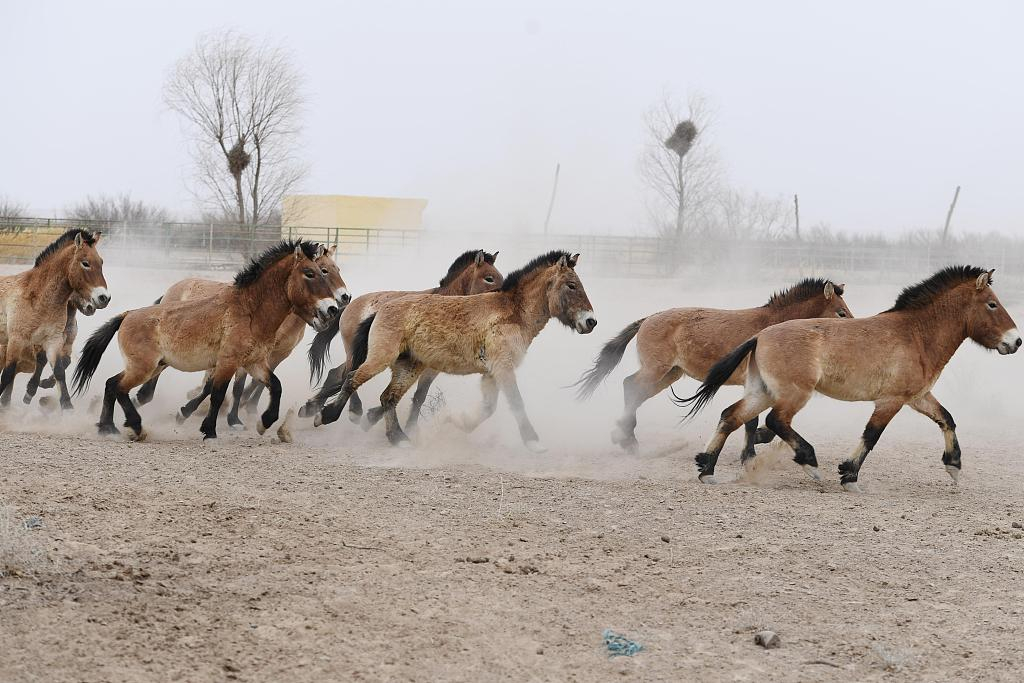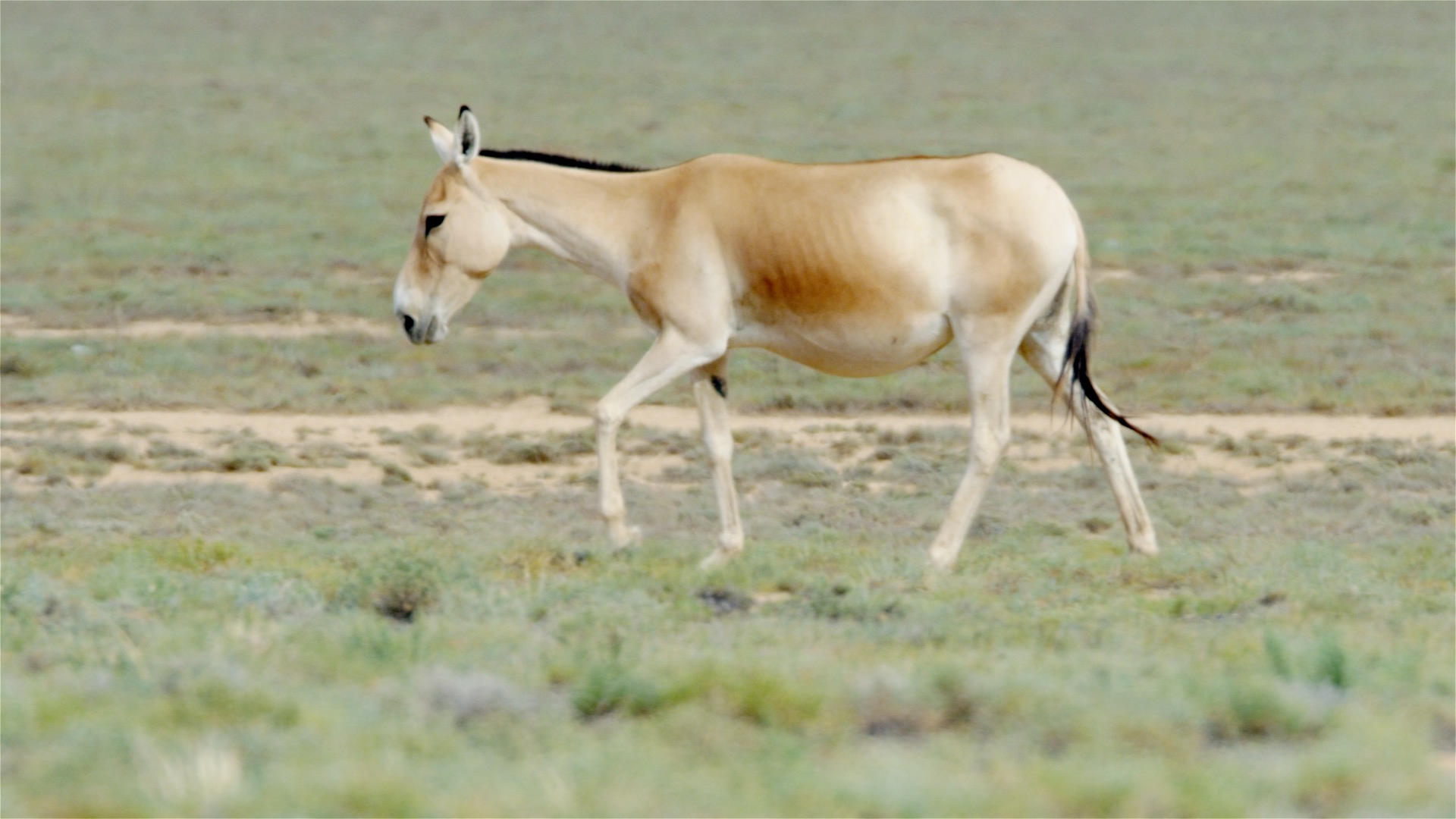Horses and donkeys are common in many countries; but some of them are so rare that they are listed as endangered species by the International Union for Conservation of Nature (IUCN). The CGTN Nature film crew have spotted rare Przewalski's horses and onager donkeys in the Altai Mountains of northwestern China.
00:47

Przewalski's horses are a rare horse native to the steppes of central Asia. In China, they are found in Junggar Basin in Xinjiang Uygur Autonomous Region. Przewalski's horses are the only real "wild" horse, as the other wild horses seen in the wilderness are actually feral horses descended from domesticated animals that escaped and adapted to life in the wild. Przewalski's horse has never been domesticated. However, a 2018 DNA study suggested that modern Przewalski's horses may descended from the domesticated horses of the Botai culture of Kazakhstan and North Asia.

The species was first discovered in 1879 though less than a century later, in the year 1969, it became extinct in the wild.
During these nine decades, people hunted the wild horses on a massive scale and used them as war horses in World War II. This drastically reduced the species' population and pushed it to the brink of extinction. By the end of the 1950s, only 12 individual horses were left in the world, living in captivity.

China has set up two main habitats for Przewalski's horses: Xinjiang Kalamely Reserve and Gansu Wuwei. The group of horses live in Minqin County, Wuwei City in Gansu Province, northwest China. /VCG
China has set up two main habitats for Przewalski's horses: Xinjiang Kalamely Reserve and Gansu Wuwei. The group of horses live in Minqin County, Wuwei City in Gansu Province, northwest China. /VCG
China initiated a Przewalski's horse reintroduction project in 1985 when 11 wild horses were imported from overseas. Since 1986, Chinese researchers have bred Przewalski's horses in captivity, with the program seeing over 20 years of success.
The Xinjiang Wild Horse Breeding Centre has bred a large number of the horses, with many of them released into the Kalamely National Nature Reserve. As of 2018, the species' total population in Xinjiang has exceeded 400, of which more than 200 individuals living in the wild.
The success of bringing the species back has become an important milestone in the history of wildlife conservation. On the IUCN Red List, the Przewalski's horse was reclassified from "extinct in the wild" to "critically endangered" in 2008, and from "critically endangered" to "endangered" after a 2011 reassessment.

A Mongolian wild ass in the Altai Mountains. The picture is a screen shot from video clip provided by the CGTN Nature film crew.
A Mongolian wild ass in the Altai Mountains. The picture is a screen shot from video clip provided by the CGTN Nature film crew.
You may have noticed another animal in the video clip that has smaller build and lighter body color. It is the onager, or Asiatic wild ass, who has never been domesticated by humans. The video shows one of the subspecies, the Mongolian wild ass. You can tell them apart from the horses by their white bellies.
China has two kinds of wild ass, another of them being the Tibetan wild ass, or Kiang. They are both under first class national protection.
About Rare Animals in China
How many rare animals in China can you list? The giant panda, the red panda, the snub-nosed monkey or the snow leopard? We want to make sure you can name 100 or more.
China is home to rich biodiversity. This series will focus on the rare animals that inhabit China. Under national protection, they need us, and the first step of protection is to know who they are.
(Video clip credited to the CGTN Nature film crew. Cover design by CGTN's Chen Yuyang)
(If you want to contribute and have specific expertise, please contact us at nature@cgtn.com.)